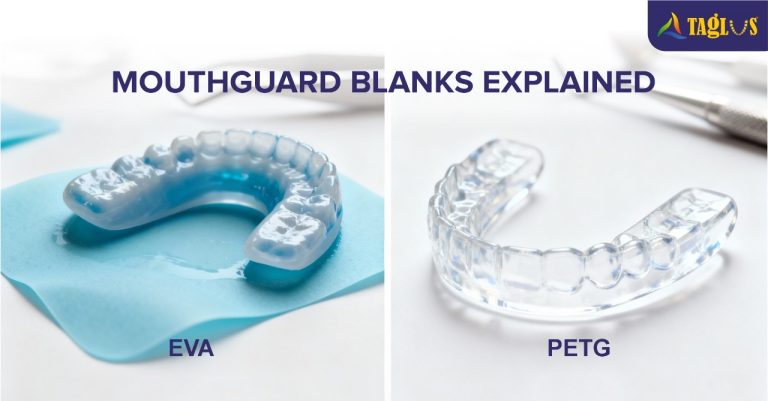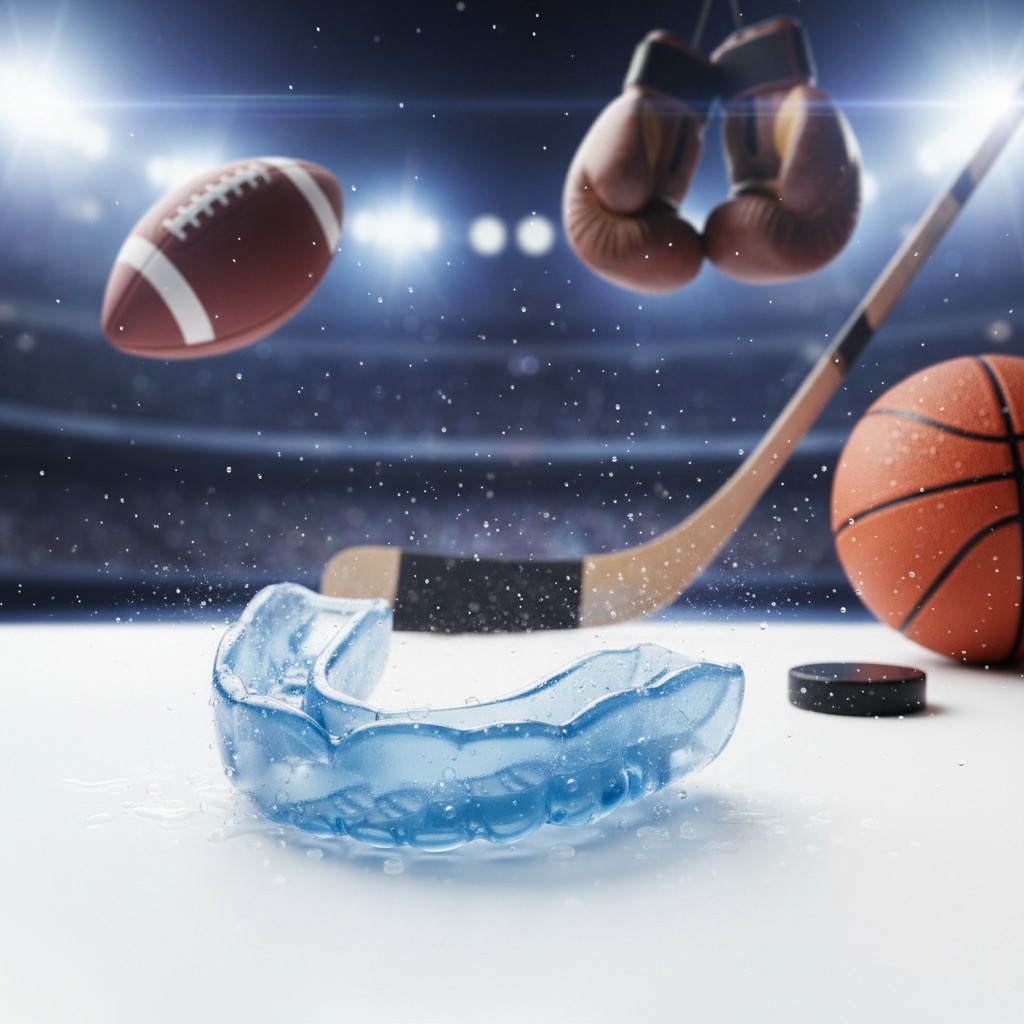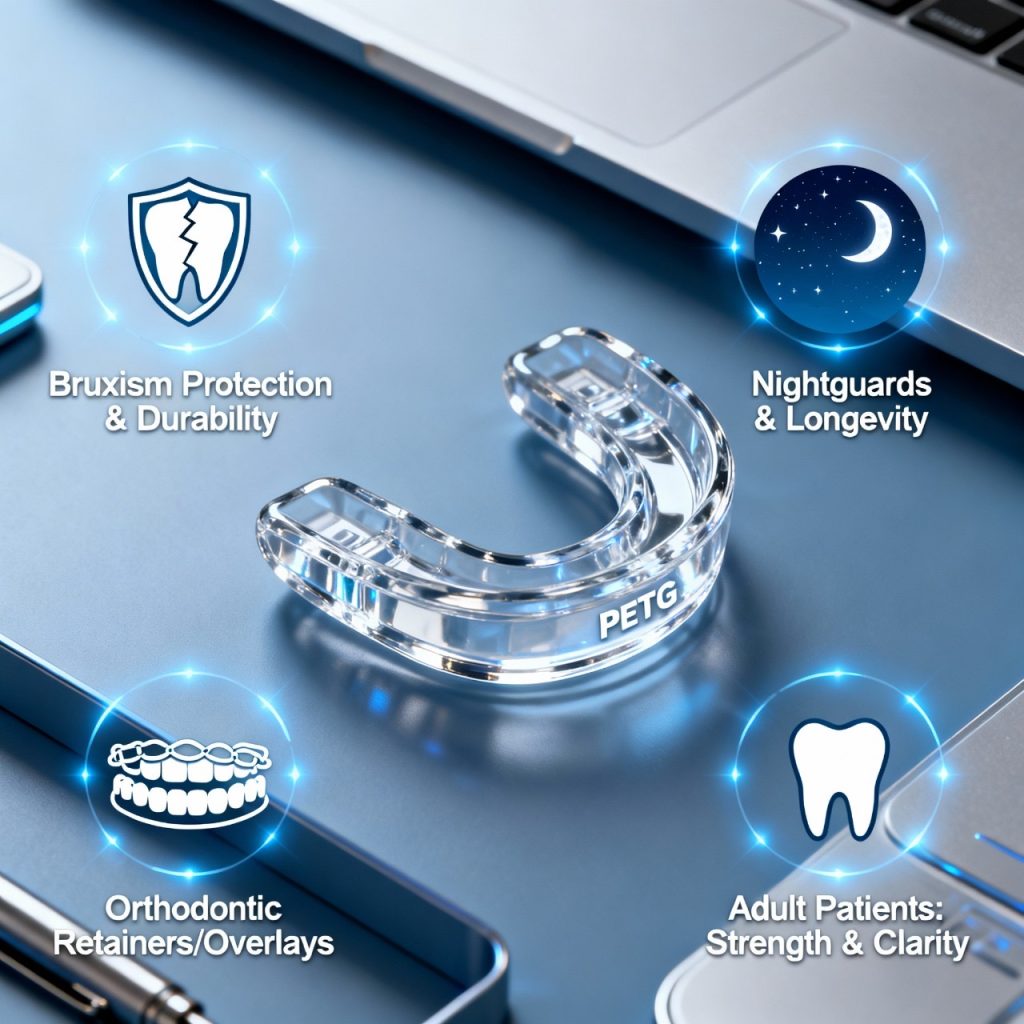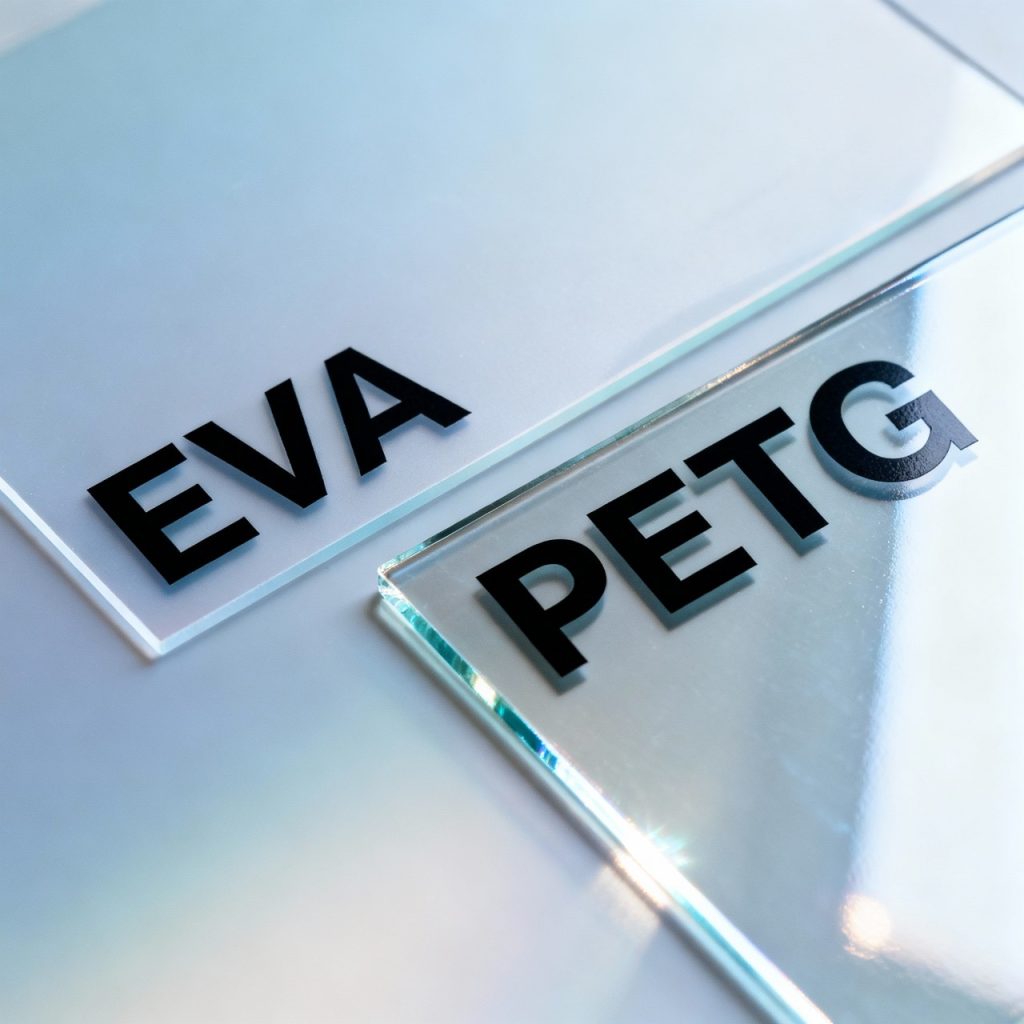Enquire Form
Mouthguard Blanks Explained: What Every Dentist Should Know Before Choosing Materials

Mouthguards are no longer a “one-size-fits-all” appliance. With customized dental solutions becoming the norm, the choice of thermoforming blank makes all the difference.
EVA (ethylene-vinyl acetate) and PETG (polyethylene terephthalate glycol-modified) are the most common materials available today that are being utilized for fabricating mouthguards.
Both materials are widely used as per their indication, but their properties and actions are very different. The real challenge for a dentist is to decide which material to prescribe in which type of case. That choice not only affects the appliance outcome but can also be a game-changer in your practice.
We break down both materials to understand their chemical composition, indications, and nature of protection in a better way.
EVA (Ethylene-Vinyl Acetate): The Top Choice for Sports

Composition
EVA or Ethylene-Vinyl Acetate is a flexible copolymer of ethylene and vinyl acetate. It’s kept stable by adding certain additives. The ratio of these components influences the hardness and flexibility of the material, making it suitable for impact absorption.
It is generally considered biocompatible since it is BPA-free, BPS-free, latex-free and phthalate-free. But like any polymer, there is always a possibility of some chemical leaching over long-term use.
Key Properties
- Soft and flexible, making it comfortable to wear
- Good shock absorption, reducing risk of trauma during impact
- Easy to thermoform and adapts to different arch forms
- Patient-friendly for long wear
When to Recommend EVA
- As sports mouthguards in contact sports like boxing, football, hockey or basketball
- In cases where flexibility and comfort are more important than durability, like for children and teenagers.
- For single-layer protective guards, when bulk reduction and acceptance are priorities
EVA continues to be the trusted material for sports-related protection because it wins the situation due to its high impact resistance. But in cases where continuous force, like heavy grinding or bruxism, is present, its softness leads to faster wear, and thus, for such cases, PETG is a better alternative.
PETG (Polyethylene Terephthalate Glycol-Modified): The Durable Choice for Night Use

Composition
PET-G is just like PET, only with glycol added to make it more efficient. The glycol prevents crystallization, making the material tougher, clearer and less brittle compared to standard PET.
Key Properties
- PETG is rigid and stable, offering long-lasting performance
- It has high clarity, giving it an aesthetic edge for retainers and nightguards.
- It holds its shape over time because of excellent dimensional stability.
- It does not exhibit leaching chemicals in the oral moisture. Thus, is resistant to saliva and common cleaning agents, reducing surface degradation
When to Recommend PETG
- For bruxism appliances, where durability is the prime concern
- For nightguards, since stability and longevity are essential
- For orthodontic retainers and aligner overlays, where aesthetics and strength are equally important
- For adult patients, especially those who want a clear and durable appliance
Unlike EVA, PETG does not cushion impact well. It is not the material of choice for sports, but it performs exceptionally in long-term dental appliance applications.
Comparison of EVA and PETG for Mouthguards

| Feature | EVA (Ethylene Vinyl Acetate) | PETG (Polyethylene Terephthalate Glycol) |
| Feel | Soft, flexible, cushion-like | Firm, rigid, holds shape |
| Best For | Sports mouthguards (shock absorption) | Bruxism splints, night guards, long-term use |
| Durability | Moderate, may wear down with heavy grinding | High, resists cracks and wear |
| Adaptation | Easy to thermoform and adjust | Holds exact shape, less forgiving |
| Comfort | Gentle on gums and teeth | More noticeable in mouth, but stable fit |
| Patient Preference | Children, teens, athletes | Adults, bruxism patients, long-term appliance use |
Choosing the Right Material
The real question to ask before prescribing is simple: what problem are you solving for the patient?
- For trauma prevention in sports, EVA is the safer choice.
- For grinding, clenching, or long-term appliance stability, PETG is more suitable.
- In cases where both needs exist, a multi-layered design combining EVA for cushioning and PETG for strength can be considered.
| Dentist’s Checklist Before Recommending |
| Look at the patient’s lifestyle – is the person actively into sports? |
| Check for oral habits – grinding, clenching, or wearing a retainer after braces. |
| Age group – kids usually need something soft and comfortable; adults may want something stronger and clearer. |
| Keep in mind the practical side – comfort, how long it will last and whether the patient finds it worth the cost. |
Matching the material to the patient’s exact need ensures better compliance, protects oral health and delivers predictable results.
Key Takeaway for Dentists
While prescribing or fabricating mouthguards, consider patient lifestyle and clinical need:
Sports players? EVA provides comfort and impact absorption.
Bruxism patients? PETG offers strength, durability, and clarity.
By choosing the right blank, you improve both clinical outcomes and patient compliance.
At Taglus, we provide high-quality thermoforming sheets in both EVA and PETG-based variants, designed for precision, durability, and patient comfort.
Know More About Us
SignUp To Our Newsletter And Get To Know More About Taglus
Copyrights@taglus-2025
*Taglus is a trademark of Vedia Solutions










Leave a Reply